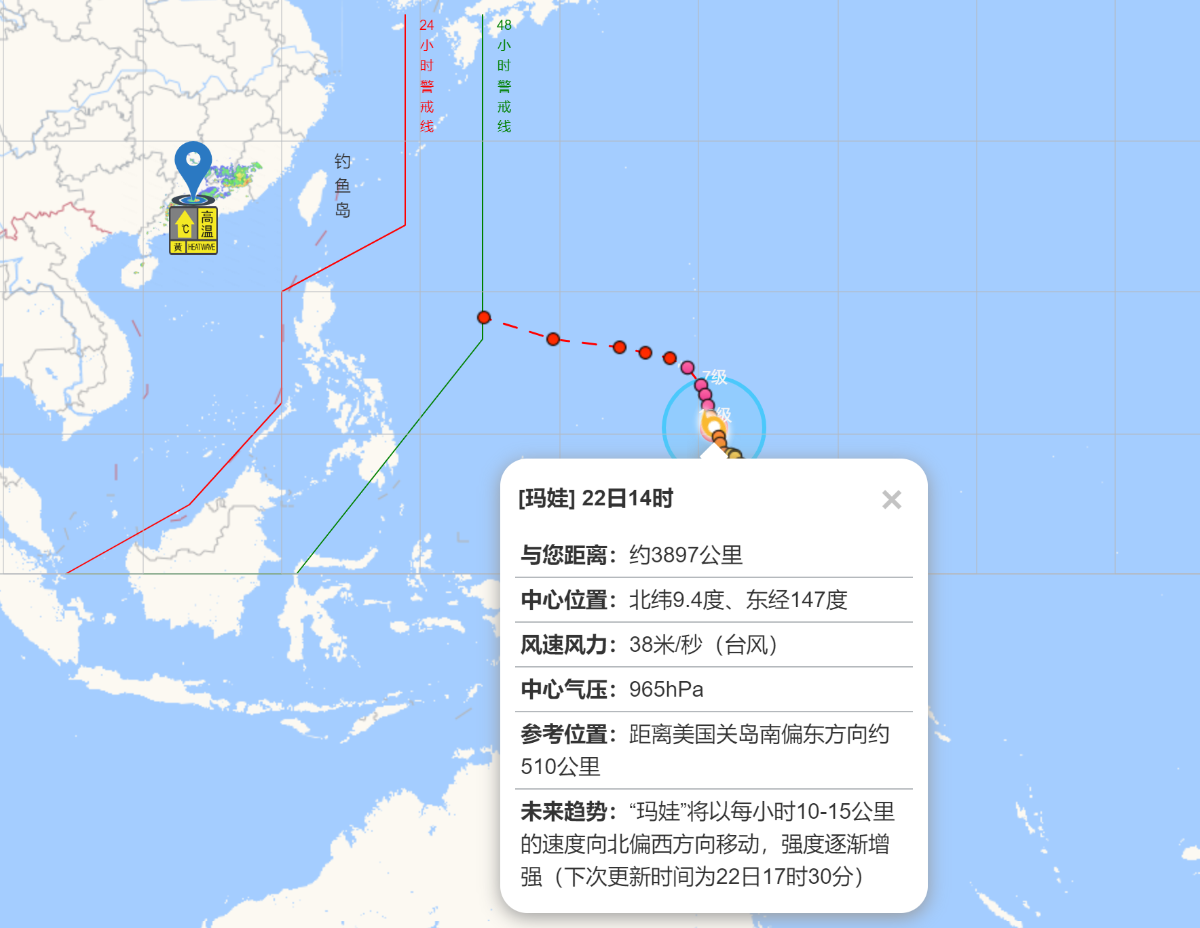On May 21, Guangzhou issued its first yellow alert for high temperatures of the year, with the highest temperatures in Yuexiu and Tianhe districts expected to reach 35 degrees Celsius these two days. By 15:30 that day, all districts in the city except Nansha and Conghua districts had issued yellow alerts for high temperatures.

(Photo/GDToday)
In addition, Mawar, the second typhoon of the year, formed at 14:00 on May 20 in the northwest Pacific Ocean, about 4,200 kilometres southeast of Guangzhou, with the maximum wind scale reaching 18 m/s near the centre.
According to Guangzhou Meteorological Bureau, Mawar will slowly head in a northwest direction towards the east sea of Taiwan Province at a speed of 5 to 10 kilometres per hour, and gradually strengthen. It will have no direct impact on Guangzhou in the following few days. The National Meteorological Center forecasts that Mawar has evolved into a severe tropical storm, and it may soon strengthen into a super typhoon.

(Photo/Guangdong Meteorological Service)
The heavy rain, known as the “Dragon Boat Rain”, referring to the rainfall around the Dragon Boat Festival, started to hit Guangdong on May 21, according to the Guangzhou Meteorological Bureau. From May 21 to June 20, the average rainfall in the province will be close to that of the same period of last year, with more rainfall in the Pearl River Delta and the southern coastal areas.

(Photo/GDToday)
On May 22 and 23, under the influence of weak cold air moving southward, there will be a local rainstorm or heavy precipitation in Guangdong, accompanied by a local short-term gale, with the temperature dropping slightly from north to south. On May 24, affected by southerly airflow, western Guangdong and the Pearl River Delta will see substantial precipitation.
Reminder
1. Pay attention to potential disasters such as landslides, mudslides, local mountain torrents, as well as flooding in urban and rural areas caused by heavy local downpours.
2. Keep a lookout for the adverse effects of lightning and short-time gales on outdoor activities, construction equipment, outdoor billboards, temporary structures and dilapidated houses.
3. Precipitation can easily cause slippery roads and reduce visibility, so it is necessary to watch out for traffic jams and accidents caused by meteorological risks.

Author | Nancy
Editor | Wing, Steven, Monica, James
















